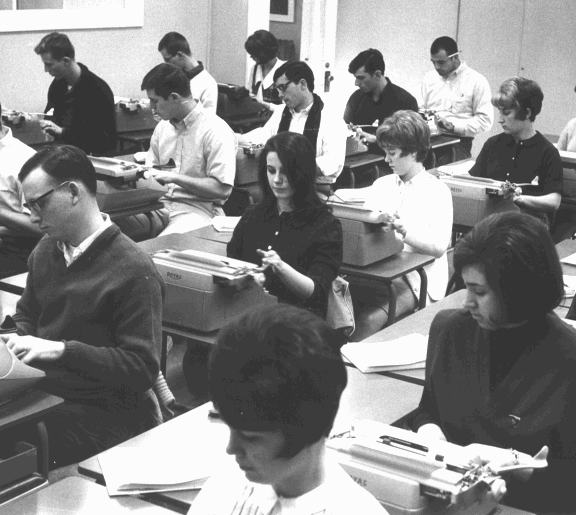PHASE III Spring 2009 (in progress): Standardize evaluation measures in ENGL 104 College Writing I and ENGL 106 College Writing II to incorporate elements of multimodality.
For this phase, we have started looking ahead to potential challenges of assessment once several sections begin using Web 2.0 assignments. Sorapure (2006) points out that when faced with assessing multimodal writing products such as digital movies, podcasts, or web pages, instructors often choose one of two tactics: either assessing the new multimodal product using previous criteria such as “thesis” and “organization” while adding a few new categories relating to new media elements, or we “draw on rules and models developed by other areas (most notably, graphic design) to determine how to teach and assess specific features of new media production. As a first start, we have chosen to do a mix of both. During one composition faculty meeting we worked together to create a rubric to maintain many of our former standards, but left categories open-ended so that multimodal projects could also be considered when determining if a student had met the minimum requirements for College Writing II.
As noted previously, our department collaboratively evaluates portfolios of work from first-year composition courses and we currently have a standard rubric containing four loose categories of “thesis and development,” “organization,” “documentation,” and “mechanics” to assess several papers as a body of work. This rubric does not currently evaluate qualities of “delivery,” “design,” or “audience.” These categories will likely become more important if instructors choose how to incorporate multimodality and some use video or audio essays while others use web pages or even brochures. For Phase I and Phase II of the Multimodal Composition Initiative, we have chosen to use the existing rubrics for these courses partially to find what revisions need to be made, but starting with the Fall 2009 semester we will switch to this rubric for all College Writing II portfolios.. Students currently put all non-print work on CD and insert the CD in a final paper-based portfolio to turn in. These CDs are “read” by each evaluator at his or her computer during the review process. While this solution is far from perfect, it works with existing technology on campus. However, it is clear that completely electronic portfolios are feasible as Dr. Lanzendorfer's pilot (noted in Phase II) suggests. Later phases will likely explore the possibility of developing and then exchanging electronic portfolios through the Content System available through Blackboard classroom management software as this software is already available to all students and faculty at UF.
As a follow up from Phase II, we also have met for a composition faculty meeting where several faculty using multimodal assignments "show and tell" the assignments on a projection screen and share assignment sheets and tips. Click here for a partial audio recording of this meeting (12 minutes). The audio recording begins with a faculty member asking if students above an 85% in College Writing II should be required to do electronic portfolios because these portfolios do not need to be shared for a trade-grading session with full composition faculty. As noted elsewhere, only students below an 85% major paper average have portfolios of semester work read by an anonymous faculty grader (see the College Writing II Information Packet for details). However, all students in every section complete a portfolio. Those with above an 85% receive the grade assigned to them by the instructor. Those below must pass a full portfolio read to receive the grade assigned to them by the instructor. This is just one of the intial concerns and suggestions offered by faculty detailed in the audio recording, and others include copyright concerns, the ramifications of featuring students in videos on the web (that one instructor solved using our general public release form required by The University of Findlay), and the role of Writing Center tutors who might look at multimodal projects. For reference, I am the primary narrator on the audio file and guide the faculty discussion. The discussion is cut off when we discuss specific students and/or projects (for privacy reasons) and because music files are used in web pages that students did not often have permission to use. However, the intial discussion does indicate that faculty are thinking about how to use multimodality within the classroom. However, I am not sure that the same can be said for our adjuncts at this point. It should be noted that adjuncts have the same access to computer labs, technology enhanced classrooms, and free technology workshops on campus as regular faculty and most, if not all scheduling and course requests are usually honored. Still, all of the voices on the recording are full-time tenure or tenure-track faculty members which may suggest something about who feels free (or has time) to experiment with multimodal projects and who doesn't. I do meet with adjuncts separately and offer regular technology training, but a follow-up discussion is clearly necessary and needs to be scheduled as later part of Phase III.
<<back to "Implementing a Multimodal Composition Initiative"
